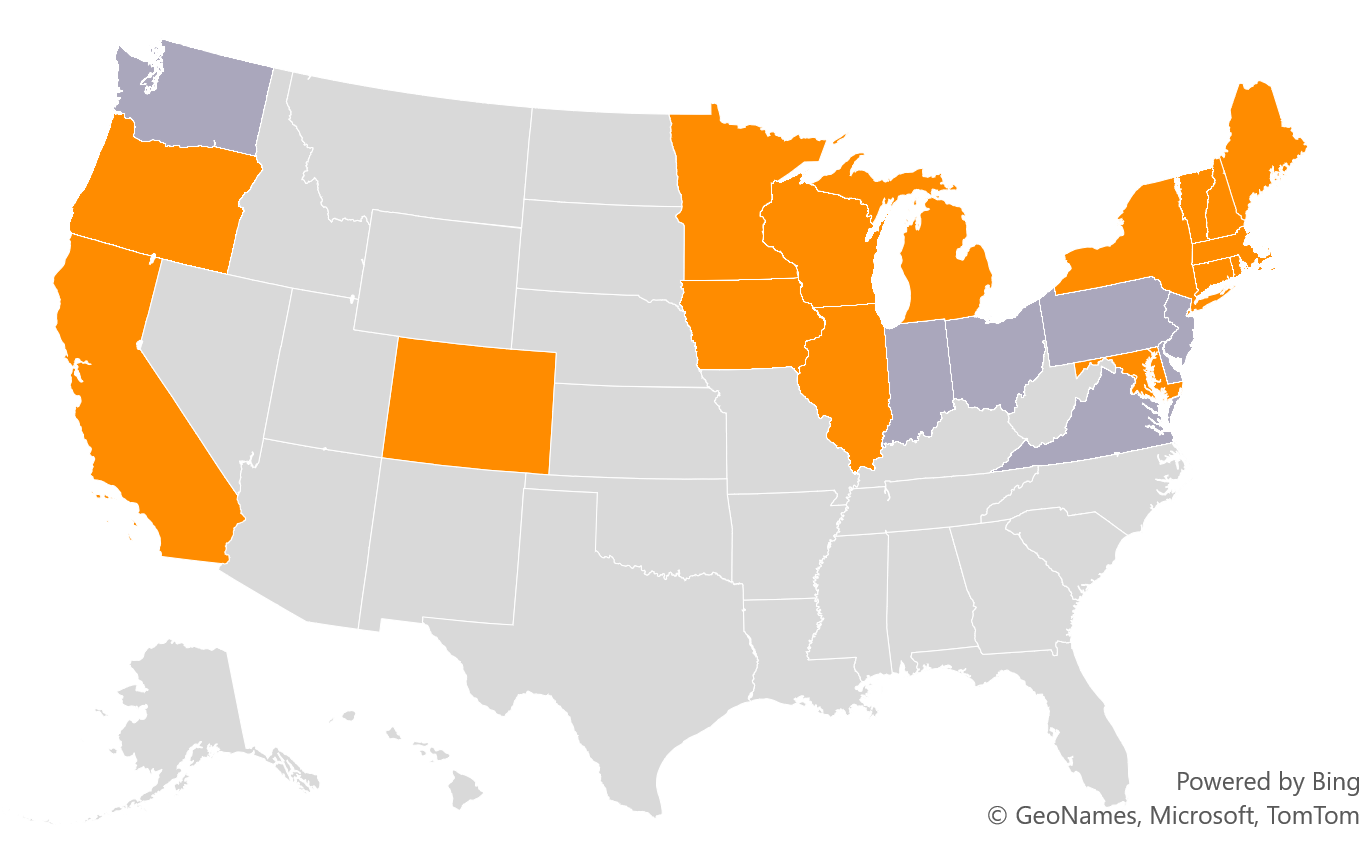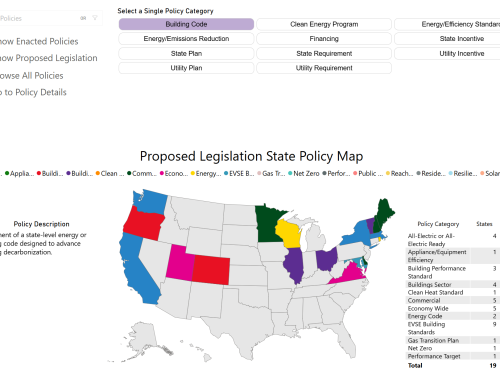
According to Buildings Hub’s Market Factors dashboard, about 13 percent of total U.S. greenhouse gas emissions come from the domestic building stock. Additionally, the Environmental Protection Agency (EPA) estimated in 2019 that the building stock in totality accounts for about 30 percent of emissions, after including indirect emissions resulting from electricity production and use.
Recently, the federal government began addressing these significant emissions with building electrification policy. The first federal building performance standard was announced in December 2022. In a statement, the Biden-Harris administration announced its intention to implement energy efficiency measures in 30 percent of the federal government’s building stock by 2030. The announcement aligned with the administration’s goal of achieving net-zero emissions in all federally owned buildings by 2045, as well as the Department of Energy’s proposed rulemaking to electrify all new or majorly retrofitted federal buildings.
While the federal government is relatively new to this issue, state governments have long led by example in terms of instilling building electrification and decarbonization policies for state-owned buildings. Of the 24 Spotlight States tracked by Buildings Hub, sixteen states and the District of Columbia have some sort of building electrification or energy efficiency requirement for state- or municipality-owned buildings (Figure 1). The EPA also offers a guide for state, local, and Tribal governments on lead by example policies to aid municipalities also fresh to the issue in “demonstrating energy and environmental leadership;” its impact is palpable across existing state lead by example policies.
Figure 1: Spotlight States with Active “Lead By Example” Policies

Source: Atlas Buildings Hub Spotlight States Dashboard | States in light grey are not included in Buildings Hub Spotlight States.
The EPA guide displays several pathways for building decarbonization leadership that states have adapted to lead by example, such as: Offering loans or other funds to municipalities, setting energy standards or emissions reductions goals for state-owned buildings, or offering an amalgamation of programs for state agencies. Interestingly, eleven states established these policies via executive order: Those from Connecticut, Iowa, Maine, Maryland, Massachusetts, Michigan, Minnesota, New Hampshire, New York, Rhode Island, and Wisconsin.
For instance, Connecticut’s current Lead By Example (LBE) program, which started in 2012, was expanded by Governor Ned Lamont’s first executive order in 2019, which he later added onto in 2021. It functions by dispensing state dollars for electrification and efficiency projects, doled out by utilities or the LBE’s bond pathway. The state’s LBE program and in 2019 accounted for about 4000 state buildings that amounted to around 20 percent of statewide electricity and natural gas consumption. The 200 projects implemented by the program has generated over $6 million in annual state savings. The program’s website notes that bond-funded projects are ideal for replacement of lighting, rooftop units, boilers, chillers, and windows — matching the EPA guide’s recommended action of procuring energy-efficient products, especially when in place of older or less efficient technologies.
Illinois’ Green Buildings Act serves the same purpose as a lead by example program based on an energy benchmark and is framed similarly to others nationwide, despite its inception in the state legislature, as opposed to executive action. Enacted in 2009, it mandates that all state-funded new construction and major retrofits should “seek” a green building certification, such as LEED or Green Globes; if a building is less than 10,000 square feet, it must follow the highest LEED standard “that is practical.” The language used in the act seems to create some leeway in pursuit of maximum energy efficiency in state buildings. Nonetheless, Illinois government buildings are still bound by the State Agency Energy Efficiency Act passed in 2007, which required all state agencies to decrease energy use by 10 percent by 2018, and mandated that agencies deploy ENERGY STAR appliances. These goals were increased by Executive Order 7, signed by Governor Pat Quinn in 2009, to 20 percent by 2020; the state has not announced if this goal was met.
State policies blocking decarbonization of state buildings is rare; only Ohio’s SB 310 passed in 2016 comes close. The bill relaxes the requirement for a life-cycle cost analysis before construction to only buildings over 20,000 square feet and deflates a state agency’s power to set energy efficiency standards for state building leases. LBE policies are generally win-win — they generate cost savings for state governments while also benefiting state climate agendas — and circumventing that easy win seems incongruous for state leaders nationwide.



